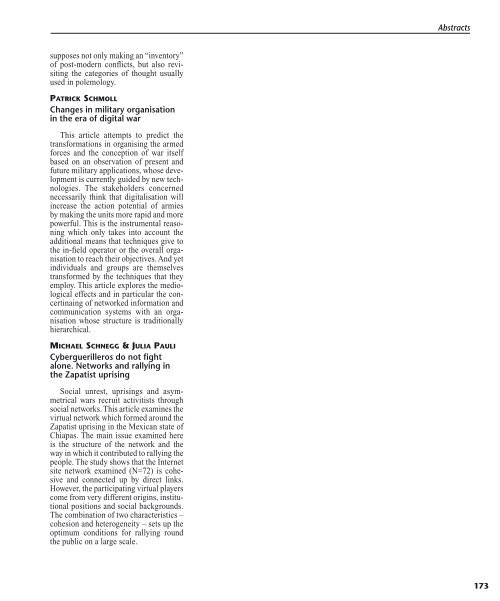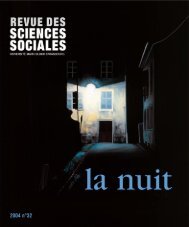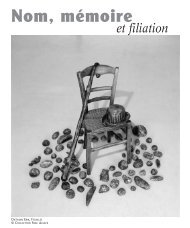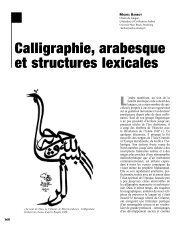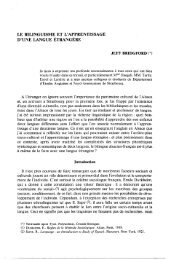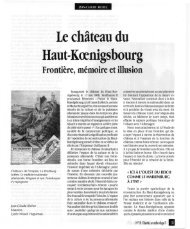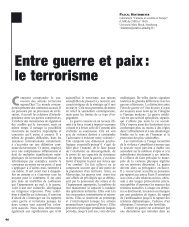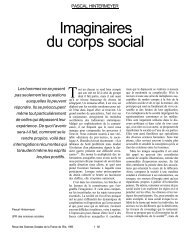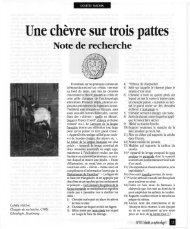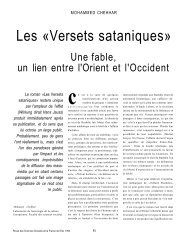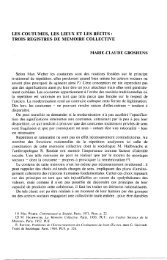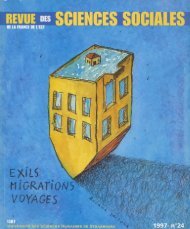Comment - Revue des sciences sociales
Comment - Revue des sciences sociales
Comment - Revue des sciences sociales
You also want an ePaper? Increase the reach of your titles
YUMPU automatically turns print PDFs into web optimized ePapers that Google loves.
Abstracts<br />
supposes not only making an “inventory”<br />
of post-modern conflicts, but also revisiting<br />
the categories of thought usually<br />
used in polemology.<br />
PATRICK SCHMOLL<br />
Changes in military organisation<br />
in the era of digital war<br />
This article attempts to predict the<br />
transformations in organising the armed<br />
forces and the conception of war itself<br />
based on an observation of present and<br />
future military applications, whose development<br />
is currently guided by new technologies.<br />
The stakeholders concerned<br />
necessarily think that digitalisation will<br />
increase the action potential of armies<br />
by making the units more rapid and more<br />
powerful. This is the instrumental reasoning<br />
which only takes into account the<br />
additional means that techniques give to<br />
the in-field operator or the overall organisation<br />
to reach their objectives. And yet<br />
individuals and groups are themselves<br />
transformed by the techniques that they<br />
employ. This article explores the mediological<br />
effects and in particular the concertinaing<br />
of networked information and<br />
communication systems with an organisation<br />
whose structure is traditionally<br />
hierarchical.<br />
MICHAEL SCHNEGG & JULIA PAULI<br />
Cyberguerilleros do not fight<br />
alone. Networks and rallying in<br />
the Zapatist uprising<br />
Social unrest, uprisings and asymmetrical<br />
wars recruit activitists through<br />
social networks. This article examines the<br />
virtual network which formed around the<br />
Zapatist uprising in the Mexican state of<br />
Chiapas. The main issue examined here<br />
is the structure of the network and the<br />
way in which it contributed to rallying the<br />
people. The study shows that the Internet<br />
site network examined (N=72) is cohesive<br />
and connected up by direct links.<br />
However, the participating virtual players<br />
come from very different origins, institutional<br />
positions and social backgrounds.<br />
The combination of two characteristics –<br />
cohesion and heterogeneity – sets up the<br />
optimum conditions for rallying round<br />
the public on a large scale.<br />
173


